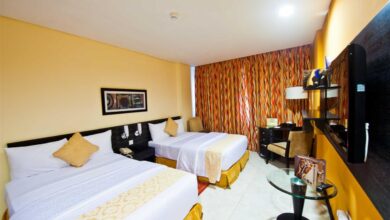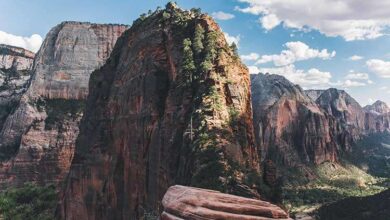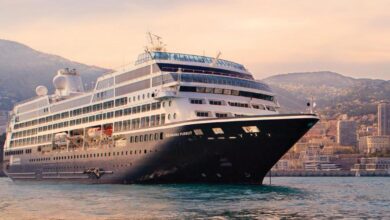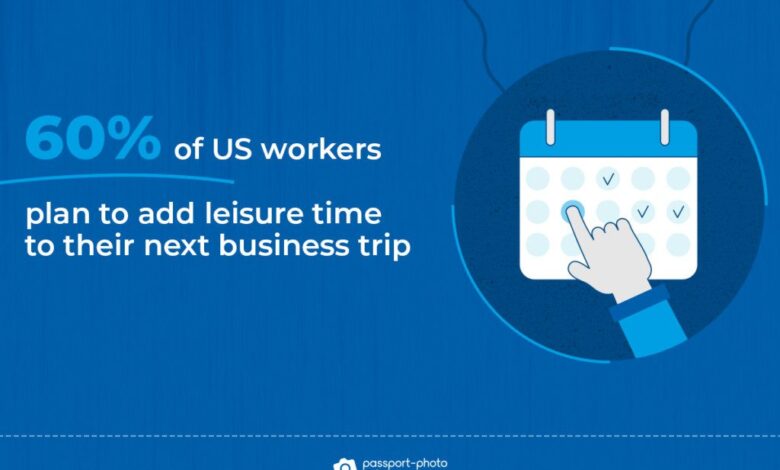
Bleisure More Than a Buzzword
Bleisure is now more than a buzzword; it’s a transformative shift in how we work and travel. This evolution is impacting everything from travel booking patterns to the very structure of the modern workplace. We’ll explore the history of bleisure, its impact on destinations and businesses, and the exciting future of this blended travel style.
This in-depth look at bleisure dives into the factors driving its rise from a niche trend to a mainstream phenomenon. We’ll examine the changing attitudes, the practical considerations for businesses and individuals, and the evolving landscape of travel and tourism. Prepare to be inspired by the insights that follow!
Defining Bleisure’s Evolution
Bleisure, the blending of business and leisure travel, has transitioned from a niche trend to a significant force in the travel industry. Initially a relatively obscure concept, it has now become a well-established part of the modern travel landscape. This evolution is driven by several factors, reflecting a changing work culture and traveler preferences. Understanding its journey helps us appreciate its current significance and future potential.The concept of bleisure wasn’t always a defining characteristic of travel.
Early forms of combining work and play existed, but they weren’t explicitly labeled as “bleisure.” As work-life balance became more important and remote work options increased, bleisure naturally emerged as a practical and desirable way to combine professional obligations with personal enjoyment.
Historical Overview of Bleisure
The early stages of bleisure’s evolution were characterized by a gradual shift in mindset. Businesses began recognizing the benefits of allowing employees flexibility, and employees were increasingly seeking opportunities to integrate personal travel into their professional schedules. The availability of affordable and reliable technology, like high-speed internet and video conferencing, played a crucial role in enabling remote work and travel.
This led to an increase in the number of people who could seamlessly blend work and play during their trips.
Factors Contributing to Bleisure’s Rise
Several factors contributed to the rise of bleisure’s popularity. Increased flexibility in work schedules, a desire for work-life balance, and the affordability of travel all played significant roles. The rise of remote work options enabled individuals to combine business travel with personal trips, and the availability of budget-friendly travel options made it more accessible. Furthermore, the desire for personal enrichment and a better work-life balance pushed people to incorporate bleisure into their travel plans.
Bleisure is no longer just a trendy term; it’s a significant shift in travel patterns. Recent events, like the Air Jamaica CEO’s resignation, which sparked a protest ( air jamaica ceo resignation prompts protest ), highlight the growing importance of blending business and leisure. This trend underscores how personal travel is now deeply intertwined with professional goals, making bleisure a crucial aspect of modern travel.
Shift in Mindset Leading to Mainstream Acceptance
The shift in mindset is crucial to understanding bleisure’s evolution. Traditionally, business trips were often seen as solely focused on work. However, a change in perspective led to a realization that integrating personal time into business travel could boost productivity and employee morale. Companies began recognizing the positive impact on employee well-being and productivity, while individuals sought more balanced lives.
Impact of Technological Advancements on Bleisure
Technological advancements have been instrumental in the evolution of bleisure. The development of reliable video conferencing tools and cloud-based software has facilitated remote work, enabling employees to seamlessly transition between work and leisure activities during their trips. This technology allows for effective meetings and collaboration, even while traveling. Furthermore, readily available and affordable online booking tools have simplified the planning process.
Bleisure’s Impact on Travel Trends
The popularity of bleisure has influenced various travel trends. Destination choices are increasingly tailored to combine work and relaxation, with cities offering a blend of business facilities and leisure activities becoming popular destinations. There’s a growing demand for experiences that offer both productivity and entertainment, leading to the rise of co-working spaces in unique locations and the development of integrated work-leisure destinations.
Table: Key Events Shaping Bleisure’s Evolution
| Year | Defining Event | Impact on Bleisure |
|---|---|---|
| 2000s | Increased availability of high-speed internet and video conferencing | Facilitated remote work, enabling seamless blending of work and leisure activities. |
| 2010s | Rise of the gig economy and remote work options | Increased flexibility in work schedules, allowing more people to incorporate personal travel into business trips. |
| 2020s | COVID-19 pandemic and the shift towards remote work | Accelerated the adoption of bleisure as a mainstream travel trend. |
Bleisure’s Impact on Travel and Tourism: Bleisure Is Now More Than A Buzzword
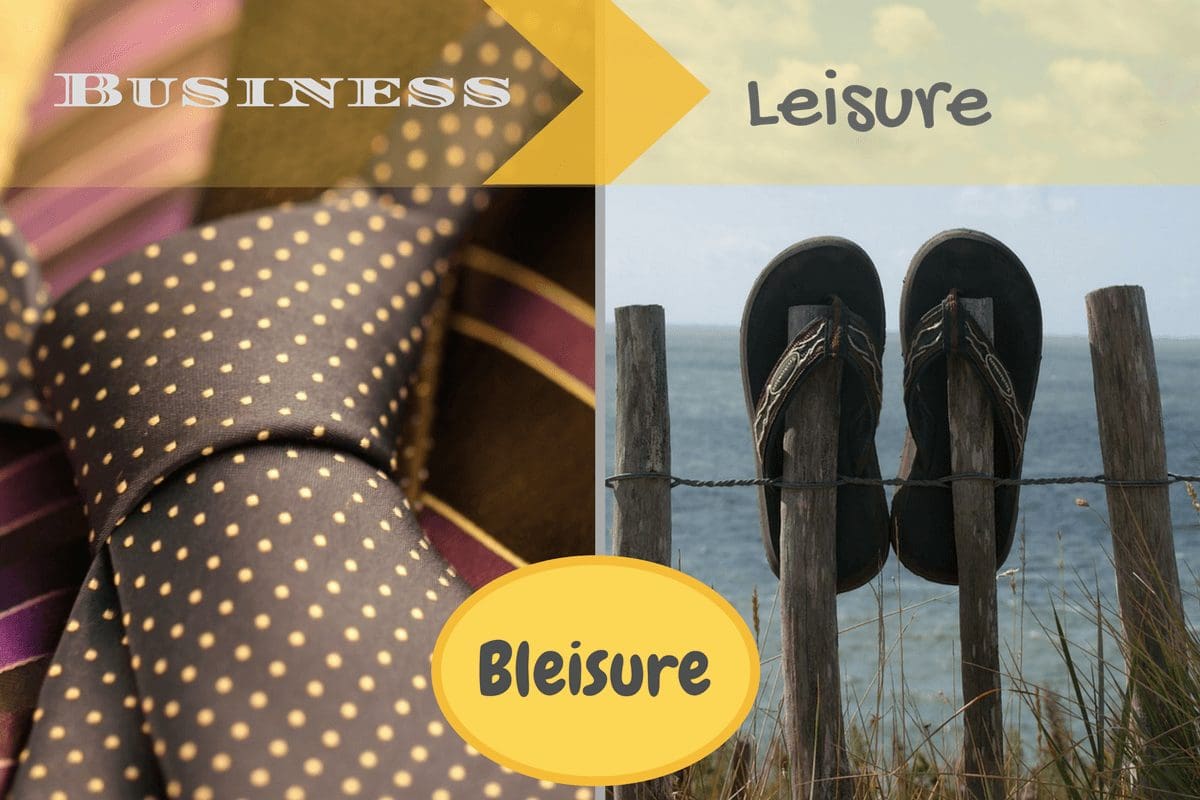
Bleisure travel, the blending of business and leisure, is no longer a niche trend. Its influence on the travel and tourism industry is profound, reshaping booking patterns, destination preferences, and the very fabric of the hospitality sector. This evolution demands a deeper understanding of how bleisure travelers differ from traditional business travelers and how the industry must adapt to meet their unique needs.The rise of bleisure has fundamentally altered the landscape of travel.
Gone are the days of rigid, strictly business-oriented travel schedules. Now, travelers seek experiences that integrate professional obligations with personal enrichment. This shift reflects a changing work culture, prioritizing employee well-being and offering flexible work arrangements.
Bleisure’s Impact on Travel Booking Patterns and Preferences
Bleisure travelers often book trips further in advance compared to traditional business travelers, allowing them to secure better deals and potentially longer stays. They prioritize destinations offering a blend of business opportunities and leisure activities. This trend is evident in the growing demand for city breaks that combine meetings and conferences with sightseeing and cultural experiences. Moreover, they prefer flexible booking options, including the ability to modify itineraries quickly.
Changes in Destination Choices and Travel Duration Driven by Bleisure
Bleisure travel has led to a shift in destination choices, with a preference for destinations that offer a variety of activities. This includes cities with thriving cultural scenes, historical sites, and outdoor recreation options, alongside business centers. The duration of bleisure trips often stretches beyond the typical business trip, allowing for extended leisure time. Examples include a week-long business trip to a city in Europe, coupled with a weekend of sightseeing or a few days of relaxation at a nearby beach resort.
This longer stay translates to a more significant economic impact on the destination.
Hotels and Other Accommodation Providers Adapting to the Bleisure Traveler
Hotels and other accommodation providers are responding to the needs of bleisure travelers by offering enhanced amenities and packages. This includes offering flexible workspaces, high-speed internet access, and curated experiences like cooking classes or guided tours. The availability of fitness facilities, spas, and family-friendly options are also gaining importance. Furthermore, hotels are increasingly partnering with local businesses and attractions to offer integrated packages that cater to the interests of bleisure travelers.
Comparison of Traditional Business Travelers and Bleisure Travelers
| Characteristic | Traditional Business Traveler | Bleisure Traveler |
|---|---|---|
| Primary Purpose | Primarily focused on business meetings and work | Balance of business and leisure activities |
| Travel Duration | Typically short-term, often overnight or a few days | Extended stays, potentially combining business and leisure activities |
| Destination Choice | Often focuses on business centers or major cities | Prioritizes destinations with a mix of business and leisure offerings |
| Accommodation Preferences | Often prioritize functionality and basic amenities | Value comfort, workspaces, and curated experiences |
| Booking Behavior | Often book closer to the trip date | Book further in advance to secure better deals and longer stays |
Bleisure and the Modern Workplace
Bleisure travel, the blending of business and leisure, is no longer a fringe benefit but a significant aspect of modern work culture. The rise of remote work and flexible work arrangements has dramatically altered the landscape of business travel, making bleisure a powerful tool for both employees and employers. Companies are increasingly recognizing the value of supporting this trend, recognizing the benefits it brings to both productivity and employee well-being.Flexible work arrangements have played a pivotal role in fostering bleisure travel.
Remote work policies, flexible hours, and compressed workweeks allow employees to seamlessly integrate personal travel into their professional schedules. This integration is no longer just a convenience; it’s a recognized strategy for enhancing employee satisfaction and productivity. Employees can now incorporate travel into their lives without sacrificing work commitments, making bleisure a win-win for both parties.
Flexible Work Arrangements and Bleisure
Flexible work arrangements are a cornerstone of modern work environments. These arrangements encompass various options like remote work, flexible hours, and compressed workweeks. The adoption of such arrangements has created opportunities for employees to incorporate personal travel into their work schedules, thus nurturing the rise of bleisure travel. Employees can now seamlessly integrate personal trips into their professional obligations, enriching their work-life balance.
Company Support for Bleisure Travel
Companies are increasingly recognizing the value of bleisure travel, moving beyond just offering traditional business travel options. Many are proactively implementing policies that support or encourage this trend. These policies can include offering reimbursement for travel expenses related to bleisure trips, or even providing dedicated workspaces in desirable locations, such as co-working spaces in popular tourist destinations. Companies are seeing that supporting bleisure travel can boost employee morale and productivity.
Benefits and Drawbacks of Bleisure
Bleisure offers numerous benefits for both employees and employers. For employees, it offers a chance to relax and recharge, potentially leading to increased productivity and reduced stress. For employers, it can boost employee morale and retention, fostering a more positive work environment. However, there are also drawbacks to consider. For employees, potential challenges include maintaining work-life boundaries and the need to effectively manage time and schedules.
Employers might face challenges in ensuring productivity while employees are on bleisure trips, as well as potential logistical issues with coordinating travel and work schedules.
Work-Life Integration and Bleisure
Work-life integration is significantly impacting the concept of bleisure. The blurring lines between work and personal life are creating a demand for more flexible work arrangements that accommodate personal needs and aspirations. Employees are seeking opportunities to integrate personal time into their work schedules, and bleisure is emerging as a powerful tool for achieving this integration. The need for work-life integration is driving the evolution of bleisure from a simple trend to a significant aspect of modern work culture.
Company Bleisure Travel Policies
| Company | Policy Details |
|---|---|
| Acme Corporation | Offers reimbursement for travel expenses related to bleisure trips up to 50% of total cost, and encourages employees to utilize remote work options during trips. |
| Innovate Solutions | Provides access to company-sponsored co-working spaces in key tourist destinations, allowing employees to work remotely while enjoying their travels. |
| Global Enterprises | Offers flexible work arrangements, including compressed workweeks, to allow employees to combine business and leisure travel. |
| Tech Innovators | Encourages employees to plan bleisure trips, with designated days for work and leisure, providing guidelines and clear communication protocols. |
This table showcases a variety of company policies that illustrate the different approaches to supporting bleisure travel. Each policy reflects the company’s specific needs and priorities, highlighting the growing recognition of bleisure as a valuable tool in the modern workplace.
Bleisure is officially more than just a trendy term; it’s a lifestyle shift. The recent renovation of AK’s Sanctuary Sun IV, a fantastic new addition to the bleisure travel scene, is a perfect example. ak unveils renovated sanctuary sun iv offering a blend of work and play, proving that this hybrid approach to travel is here to stay.
The trend is undeniable; it’s more than just a passing fancy.
The Future of Bleisure
Bleisure, the blend of business and leisure travel, is no longer a fleeting trend. Its integration into modern work and travel patterns is undeniable, and its future is brimming with potential. From evolving technologies to shifting societal values, bleisure is poised for significant transformations in the years ahead. This evolution will be shaped by a multitude of factors, including sustainability concerns, new travel platforms, and the ever-changing landscape of the modern workplace.The future of bleisure promises a more seamless and personalized travel experience, catering to the demands of a workforce that values work-life integration and seeks enriching travel opportunities.
This evolution is driven by both the changing needs of businesses and the evolving desires of individual travelers. This dynamic shift will continue to impact the travel and tourism industry and the broader economic landscape.
Future Trajectory of Bleisure Travel
Bleisure travel is predicted to continue its upward trajectory, becoming even more integrated into the fabric of business and personal travel. The lines between work and leisure will continue to blur, with businesses recognizing the value of offering employees flexible travel opportunities that enhance productivity and well-being. Employees, in turn, will increasingly seek out opportunities to combine work and leisure, balancing professional commitments with personal pursuits.
This trend is already apparent in the rise of remote work and the increasing popularity of hybrid work models.
Emerging Trends and Technologies
Several trends and technologies will significantly influence bleisure in the coming years. The rise of virtual and augmented reality experiences will enable employees to participate in meetings and training sessions from remote locations, effectively eliminating geographical barriers. Personalized travel recommendations, powered by AI and machine learning, will become increasingly sophisticated, tailoring bleisure experiences to individual preferences and needs.
Furthermore, the integration of sustainable travel practices, such as eco-friendly transportation and accommodation choices, will become an integral part of the bleisure experience.
Sustainability Concerns
Sustainability is rapidly becoming a key factor in shaping bleisure travel choices. Consumers are increasingly aware of the environmental impact of their travel decisions and are actively seeking out eco-conscious options. Businesses are also recognizing the importance of minimizing their carbon footprint and are implementing strategies to support sustainable bleisure travel, including incentives for employees to choose eco-friendly accommodations and transportation.
This is evidenced by the growing demand for carbon-offsetting programs and the increasing use of public transportation during bleisure trips.
New Travel Technologies and Platforms
New travel technologies and platforms will play a pivotal role in transforming the bleisure experience. Mobile-first travel booking apps, integrated with corporate travel management systems, will streamline the process of booking bleisure trips, reducing administrative burdens and increasing efficiency. This allows seamless integration of work-related tasks with leisure activities. Further integration of travel platforms with project management tools and communication platforms will improve collaboration and streamline work processes.
Future Scenarios for Bleisure Evolution
| Scenario | Description |
|---|---|
| Scenario 1: The Hyper-Personalized Bleisure Trip | AI-powered travel platforms will anticipate and cater to individual preferences, offering customized itineraries that seamlessly blend work and leisure. Travelers will experience highly curated experiences, from personalized restaurant recommendations to tailored fitness activities. |
| Scenario 2: The Sustainable Bleisure Pioneer | Bleisure travel will prioritize sustainability, with travelers actively seeking out eco-friendly accommodations, transportation, and activities. Businesses will encourage and incentivize employees to adopt sustainable practices, reflecting a growing awareness of environmental responsibility. |
| Scenario 3: The Virtual Bleisure Experience | Remote work and virtual meetings will become more prevalent, allowing employees to participate in business activities while experiencing leisure destinations from afar. Augmented reality and virtual reality will play a crucial role in creating immersive virtual workspaces and virtual travel experiences. |
| Scenario 4: The Tech-Integrated Bleisure Journey | Travel platforms will seamlessly integrate with corporate tools, offering real-time updates on project progress, meeting schedules, and communication channels. Employees will manage their work and leisure seamlessly through a unified platform, maximizing efficiency and minimizing travel stress. |
| Scenario 5: The Hybrid Bleisure Adventure | A blend of physical and virtual experiences will define the bleisure journey. Employees will utilize virtual tools for remote work while enjoying the benefits of in-person interactions with colleagues and local communities during physical travel. |
Case Studies of Successful Bleisure Programs
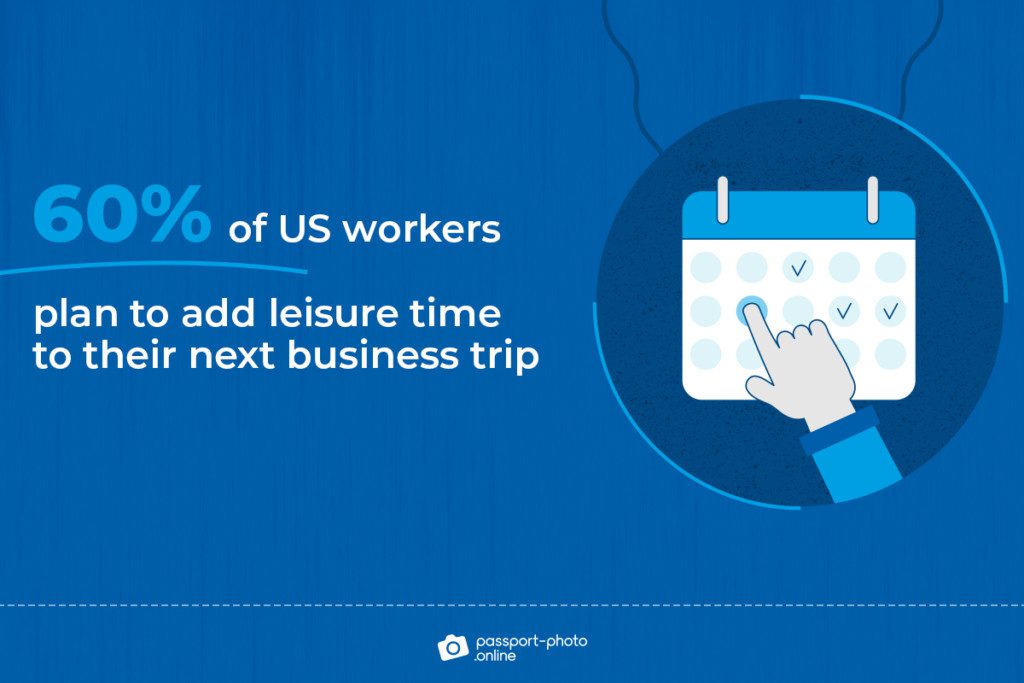
Bleisure, the blending of business and leisure travel, is no longer a fringe practice. Many companies are recognizing the significant benefits it offers, both to employees and the bottom line. Successful bleisure programs are not simply about offering employees travel perks; they are carefully crafted strategies that enhance productivity, employee satisfaction, and company culture. This section dives into real-world examples of how companies have successfully implemented bleisure programs.Companies are increasingly recognizing that employee well-being is intricately linked to productivity.
By thoughtfully integrating leisure into business trips, companies can foster a stronger, more engaged workforce, ultimately boosting performance and loyalty. This approach is not only a way to attract and retain top talent but also to promote a healthier work-life balance for employees, which positively impacts their overall well-being and job satisfaction.
Examples of Successful Bleisure Programs
Several companies have successfully implemented bleisure programs, demonstrating the potential for significant returns. These initiatives are not one-size-fits-all; they are tailored to the specific needs and culture of each organization. Companies that have effectively integrated bleisure have seen measurable improvements in employee engagement and overall performance.
Strategies and Initiatives Leading to Success
Companies that have effectively implemented bleisure programs often incorporate several key strategies. These include:
- Flexible Scheduling: Providing employees with the autonomy to adjust their work schedules to incorporate leisure activities, while ensuring deadlines and deliverables are met. This allows for better integration of personal needs and work commitments. This approach can also lead to more efficient use of time and potentially reduce the need for extra hours spent on projects.
- Incentivized Travel: Offering rewards or incentives to encourage employees to combine business and leisure travel, such as travel credits or discounts on leisure activities. This can encourage employees to explore new destinations and create lasting memories.
- Dedicated Bleisure Resources: Providing employees with access to resources and support to help them plan and execute their bleisure trips, such as travel agents, destination recommendations, or online booking tools. This allows employees to focus on their work, while the company takes care of the details of their travel plans.
- Company Culture Alignment: Integrating bleisure into the company culture by promoting the benefits and fostering a supportive environment for employees to utilize these opportunities. This can be done by showcasing employee stories of successful bleisure trips or providing company-wide support for employees’ efforts to blend business and pleasure.
Metrics for Evaluating Program Effectiveness
Measuring the effectiveness of bleisure programs is crucial for understanding their impact. Key metrics include:
- Employee Feedback: Gathering feedback from employees through surveys or focus groups to understand their experiences and satisfaction with the program. This feedback provides insights into the program’s strengths and weaknesses, allowing for continuous improvement.
- Productivity Metrics: Tracking productivity levels before, during, and after the implementation of the bleisure program. This could include metrics like project completion rates, meeting attendance, and task completion times.
- Employee Retention Rates: Monitoring employee retention rates to assess the impact of the bleisure program on employee satisfaction and loyalty. A high retention rate indicates the program is positively impacting employee morale.
- Travel Costs: Tracking travel costs associated with both business and leisure trips. Careful management of costs is essential for long-term sustainability and positive ROI.
Benefits Derived from Bleisure Programs
Successful bleisure programs have yielded a wide array of benefits for companies. These include:
- Increased Employee Engagement: By offering opportunities for relaxation and exploration, bleisure programs contribute to a more positive and engaged workforce, resulting in improved morale and a stronger sense of community within the company.
- Enhanced Employee Satisfaction: Employees who can blend work and leisure are often more satisfied with their jobs, leading to increased job satisfaction and reduced employee turnover.
- Improved Brand Image: Companies that prioritize employee well-being through initiatives like bleisure programs often develop a positive brand image, attracting and retaining top talent.
- Boost in Creativity and Innovation: Exposure to new environments and experiences can spark creativity and innovation among employees, leading to more creative problem-solving and new ideas.
Key Characteristics and Success Factors of Bleisure Programs
| Company | Key Characteristics | Success Factors | Key Metrics |
|---|---|---|---|
| Acme Corporation | Flexible work arrangements, incentivized travel credits, dedicated travel resources | Strong employee feedback, improved productivity, reduced employee turnover | Employee satisfaction surveys, productivity reports, retention rates |
| Tech Solutions Inc. | Integration of bleisure into company culture, employee-led travel recommendations, focus on sustainable travel | Increased employee engagement, improved brand image, cost-effective travel solutions | Employee feedback surveys, brand perception studies, travel cost analysis |
| Global Innovations Ltd. | Clear guidelines, focused training on utilizing bleisure opportunities, partnership with travel agencies | Improved project completion rates, enhanced employee satisfaction, reduced time-to-market | Project completion times, employee feedback surveys, market launch metrics |
Analyzing Bleisure Destinations
Bleisure travel is no longer a niche pursuit; it’s a significant force reshaping the travel and tourism industry. Understanding the specific characteristics of popular bleisure destinations is crucial for businesses and travelers alike. These destinations often combine elements of relaxation with opportunities for productivity, making them highly attractive to professionals seeking a balanced work-life integration.The allure of bleisure destinations extends beyond simply offering comfortable accommodations and scenic landscapes.
These locations cater to the unique needs of modern professionals, providing spaces for focused work, seamless connectivity, and enriching experiences that go beyond typical tourist attractions. The destinations must offer a blend of relaxation and work-friendly environments, making them ideal for blending leisure and business objectives.
Popular Destinations for Bleisure Travelers
Bleisure travelers often seek destinations that offer a blend of relaxation and opportunities for productivity. This often translates into locations with high-speed internet, co-working spaces, and access to inspiring environments conducive to focused work.
Bleisure isn’t just a trendy term anymore; it’s a lifestyle. People are increasingly blending business trips with personal relaxation, and that’s driving a change in the travel industry. This is particularly noticeable in all-inclusive resorts, which are adapting by going small, offering a more personalized and intimate experience. For example, all inclusive resorts go small to cater to this new demand, creating a more focused and less crowded environment for both work and play.
Ultimately, this trend proves that bleisure is more than just a fleeting fancy – it’s here to stay.
Attributes Appealing to Bleisure Travelers
Several attributes make certain destinations highly desirable for bleisure travelers. These include proximity to natural beauty, a vibrant cultural scene, opportunities for networking, and convenient access to transportation hubs. High-quality accommodations that seamlessly integrate workspaces with leisure areas are particularly sought after. Consider destinations like Bali, known for its stunning beaches and yoga retreats, alongside co-working spaces and business-friendly hotels, catering to the specific needs of the bleisure traveler.
Destination Attributes Catering to Unique Needs
Bleisure destinations understand the need for a balance between relaxation and productivity. This is evident in the growing number of hotels incorporating co-working spaces, offering high-speed Wi-Fi, and providing meeting rooms for business needs. Destinations also often feature activities that combine leisure and learning, like wine tasting tours, cooking classes, or art workshops. The availability of specialized services, like concierge services tailored to business travelers, contributes to the appeal.
Comparison of Different Destination Types
The appeal of different destination types to bleisure travelers varies. Coastal destinations, with their blend of relaxation and scenic beauty, often attract those seeking a tranquil escape from the daily grind. City destinations, on the other hand, cater to those who appreciate the dynamism and cultural richness of urban environments, with ample opportunities for networking and exploring diverse activities.
Mountain resorts often appeal to those seeking a blend of outdoor adventures and quiet contemplation.
Table of Popular Bleisure Destinations
| Region | Destination | Key Attributes |
|---|---|---|
| Southeast Asia | Bali, Indonesia | Stunning beaches, yoga retreats, co-working spaces, business-friendly hotels |
| Europe | Barcelona, Spain | Vibrant culture, art scene, networking opportunities, excellent transportation |
| United States | San Francisco, California | Tech hub, diverse cultural attractions, excellent co-working spaces, and business opportunities |
| Latin America | Tulum, Mexico | Luxury resorts, yoga retreats, cenotes, beautiful beaches |
| South America | Rio de Janeiro, Brazil | Cultural attractions, beaches, lively atmosphere, networking opportunities |
Bleisure and Experiential Tourism
Bleisure travel is no longer just about combining business with pleasure; it’s about crafting unique experiences that blend work and relaxation seamlessly. This evolution has driven a surge in experiential tourism, where travelers seek authentic interactions with local cultures, engaging activities, and memorable moments beyond the typical tourist traps. The demand for immersive and personalized experiences is changing how destinations are marketing themselves and how businesses are planning their employee retreats.Bleisure travelers are increasingly drawn to destinations that offer more than just sightseeing.
They crave opportunities to participate in activities that connect them with the local culture, foster creativity, and provide personal enrichment. This desire for unique experiences is transforming the way travel and tourism are perceived, creating new opportunities for destinations to cater to the bleisure market. Destinations are recognizing the potential of this trend and actively adapting to attract this discerning traveler segment.
Experiential Activities for Bleisure Travelers
The key to attracting bleisure travelers lies in providing activities that cater to both the professional and personal needs of the individuals. This includes offering a balance of structured and spontaneous experiences, allowing for both productivity and relaxation. Experiential activities should be carefully curated to align with the needs of the bleisure traveler, ensuring that they are engaging, enriching, and leave a lasting impression.
These activities must go beyond typical tourist attractions, providing unique opportunities for personal growth, collaboration, and relaxation.
Role of Activities and Attractions in Attracting Bleisure Travelers
Activities and attractions play a pivotal role in attracting bleisure travelers. Destinations that offer a diverse range of experiences, catering to different interests and preferences, are more likely to attract and retain this valuable segment of the market. From cooking classes and wine tastings to outdoor adventures and cultural immersion tours, destinations must offer a wide variety of options that appeal to the multifaceted needs of bleisure travelers.
The more engaging and immersive the experiences, the more likely they are to encourage return visits.
Bleisure is no longer just a trendy term; it’s a deeply ingrained travel trend. This is perfectly exemplified by the recent news of Bauer assuming a new role at Royal Caribbean Cruises Ltd. ( bauer assumes new role at rccl ). This move underscores how companies are increasingly recognizing and supporting their employees’ desire to blend business and pleasure, creating a win-win for both the individual and the organization.
Ultimately, bleisure is becoming a crucial part of the modern travel landscape.
Destinations Capitalizing on Experiential Tourism
Destinations around the world are recognizing the power of experiential tourism to attract bleisure travelers. They are investing in unique attractions, creating curated itineraries, and collaborating with local businesses to offer bespoke experiences. Destinations are no longer just about showcasing historical sites; they’re about providing unforgettable experiences that create lasting memories. This includes not just offering the activities, but also providing seamless logistics and support for the traveler’s needs.
Examples of Experiential Activities, Bleisure is now more than a buzzword
Numerous experiential activities cater to the needs of bleisure travelers. These experiences blend work with relaxation, allowing for both productivity and personal enrichment. They range from corporate team-building activities to immersive cultural immersions. Experiential activities should be tailored to the specific needs and interests of the traveler, ensuring that they are both engaging and valuable. Examples include cooking classes, wine tasting tours, yoga retreats, outdoor adventures, or historical tours with interactive elements.
Table of Experiential Activities in Popular Bleisure Destinations
| Destination | Experiential Activity | Description | |---|---|---| | Napa Valley, USA | Wine Tasting and Culinary Tour | Learn about winemaking, visit vineyards, and savor gourmet meals | | Kyoto, Japan | Tea Ceremony and Traditional Crafts Workshop | Experience Japanese tea culture and learn traditional crafts | | Tuscany, Italy | Cooking Class and Wine Tour | Learn to prepare Italian dishes and sample local wines | | Barcelona, Spain | Flamenco Show and Tapas Tour | Experience passionate Spanish dance and savor tapas | | Bali, Indonesia | Yoga Retreat and Spiritual Immersion | Engage in yoga, meditation, and connect with nature |
Bleisure and Sustainability
Bleisure travel, blending business and leisure, is rapidly evolving.
No longer a niche trend, it’s becoming mainstream. However, this rise in popularity brings a critical consideration: sustainability. Travel’s environmental impact is undeniable, and conscious travelers are increasingly seeking eco-friendly options. This shift is impacting bleisure choices, prompting destinations to adapt and travelers to embrace new practices.
Sustainability is no longer a “nice-to-have” but a “must-have” for bleisure travelers. The desire for experiences that minimize environmental harm and support local communities is driving a significant change in the way bleisure is planned and executed. This shift is influencing the entire travel ecosystem, from accommodation choices to transportation methods.
Sustainability Considerations Impacting Bleisure Choices
Travelers are becoming more aware of the environmental footprint of their trips. They’re prioritizing accommodations and activities that demonstrate commitment to eco-friendly practices. Carbon emissions from air travel and the consumption of resources at tourist destinations are significant concerns. This awareness has driven a significant rise in the demand for sustainable bleisure options.
Bleisure is no longer just a trendy term; it’s a lifestyle. Attendees at the upcoming ASTA in New York will see firsthand how seamlessly business and pleasure can intertwine. From networking opportunities to exploring the city’s vibrant culture, the blurring lines between work and travel are clearly evident, making bleisure a powerful force in modern travel.
Sustainable Practices Adopted by Bleisure Travelers
Bleisure travelers are actively seeking ways to minimize their environmental impact. These include choosing accommodations with sustainable certifications like LEED or Green Globe, opting for public transportation or cycling over car rentals, and reducing their consumption of single-use plastics. Furthermore, conscious food choices, supporting local businesses, and participating in eco-tours are becoming increasingly popular among bleisure travelers.
Destinations Promoting Eco-Friendly Options for Bleisure Travelers
Many destinations are proactively creating eco-friendly options for bleisure travelers. This includes developing sustainable transportation infrastructure, such as electric vehicle charging stations and improved public transport systems. Eco-friendly accommodations, utilizing renewable energy and implementing water conservation measures, are also gaining popularity. Educational initiatives, promoting responsible tourism and showcasing local environmental initiatives, are also becoming increasingly prevalent.
The Role of Responsible Tourism in the Future of Bleisure
Responsible tourism plays a crucial role in the future of bleisure. It involves considering the social, cultural, and environmental impacts of travel. It encourages travelers to respect local customs and support local businesses, reducing the potential for negative impacts. Destinations that embrace responsible tourism practices will attract environmentally conscious bleisure travelers and ensure the long-term viability of their tourism industry.
Comparison of Sustainable and Non-Sustainable Bleisure Travel Options
| Feature | Sustainable Bleisure | Non-Sustainable Bleisure |
|---|---|---|
| Accommodation | Eco-certified hotels, hostels, or guesthouses; using renewable energy, minimizing water usage, and employing eco-friendly materials. | Traditional hotels with high energy consumption, large water usage, and potentially unsustainable construction materials. |
| Transportation | Public transport, cycling, walking, or electric vehicles; minimizing reliance on private cars and air travel where possible. | Frequent air travel, car rentals, and reliance on private vehicles. |
| Activities | Eco-tours, visiting local farms, or supporting local artisans; minimizing impact on natural environments. | Large tour groups, visiting popular attractions with high tourist volume, and participating in activities that generate significant waste. |
| Food | Locally sourced, organic, and seasonal food options; reducing food miles and supporting local farmers. | Mass-produced, processed food, high meat consumption, and food from distant regions. |
| Impact | Reduced carbon footprint, lower environmental impact, and support for local communities. | Higher carbon footprint, increased environmental impact, and potential exploitation of local resources. |
End of Discussion
In conclusion, bleisure’s journey from a buzzword to a powerful force in travel and the modern workplace is undeniable. It’s reshaping how we balance work and personal life, driving innovation in the travel industry, and ultimately, changing the way we experience the world. The future of bleisure is bright, promising even more opportunities for seamless blending of work and leisure.
Query Resolution
What are some common misconceptions about bleisure travel?
Some believe bleisure is simply extending a business trip, but it’s more nuanced. It involves integrating leisure activities seamlessly into a business trip or vice-versa, making it a balanced experience.
How do hotels cater to bleisure travelers?
Many hotels now offer amenities and services designed for both business and leisure needs, such as comfortable workspaces, flexible meeting rooms, and packages combining accommodation with local experiences.
What are the environmental concerns surrounding bleisure travel?
Bleisure travel can have a significant impact on the environment. However, responsible travelers are increasingly opting for eco-friendly choices, such as sustainable accommodations and transportation options, promoting a greener approach to this trend.
How do flexible work arrangements impact bleisure travel?
Flexible work arrangements are a key driver of bleisure. Remote work policies and flexible schedules allow employees to incorporate leisure activities into their work trips or combine a work trip with personal time, enhancing the experience for both the individual and the company.


